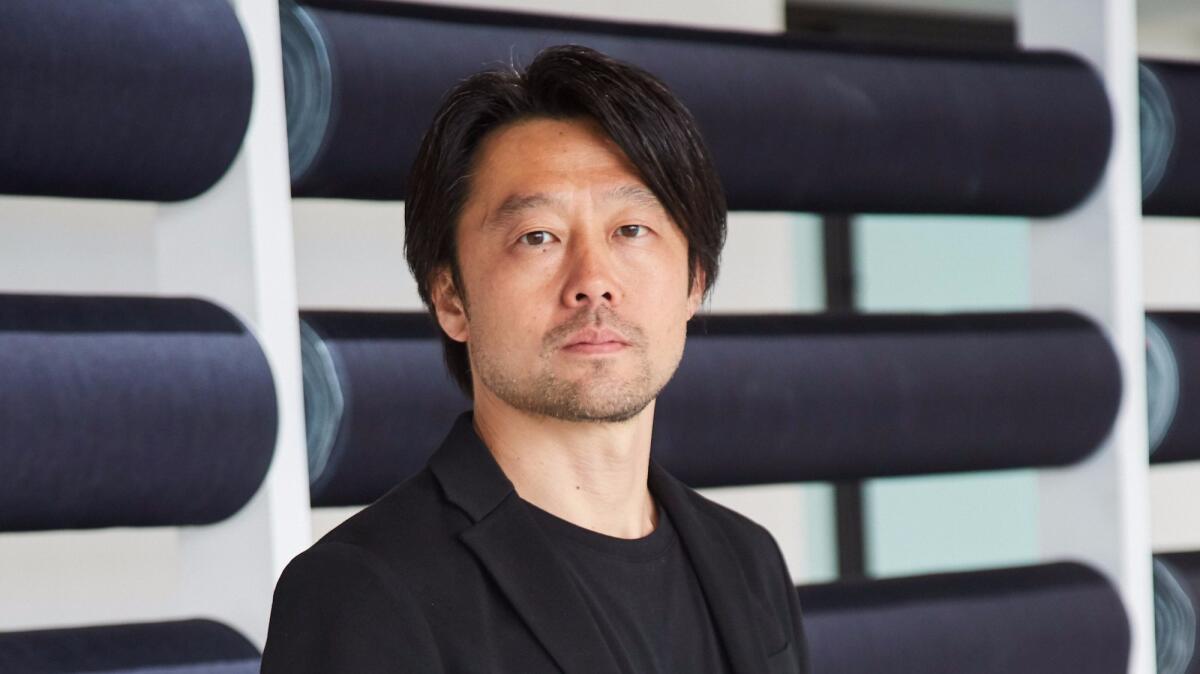Inside the Gardena lab where Uniqlo jeans get ripped, hand-sanded and stone-washed for that lived-in look
- Share via
Before anything could get between you and your Calvins, before you spotted your perfect pair of jeans at the store and had to strategically wrangle your size from a precarious Jenga-like denim tower, your jeans had to take a journey to become the finished product they are today.
The creative design and production that goes into making a single pair of jeans involves a number of highly technical and innovative steps. Within the larger framework of jeans design/manufacturing, the fit, fabric and finish are considered some of the most important and nuanced steps in jeans production.
To investigate the enigmatic jeans-making process, we ventured 30 minutes south of downtown L.A. to the Jeans Innovation Center in Gardena, a facility that pioneers the research and development of denim fabric. The JIC also focuses on environmentally friendly processing and production methods, utilizing sustainable chemicals and techniques.
More or less a denim laboratory committed to making denim production more efficient while adhering to current trends and styles, the JIC, owned by Japan’s Fast Retailing Group, is the facility behind such notable brands as Uniqlo and J Brand jeans.
“The center ... allows us to test and try fits and finishes for our denim — most of which we sourced from [Japanese denim manufacturer] Kaihara — and we built the center with the capabilities of developing our denim in a very sustainable way,” said Masaaki Matsubara, director of the center, during a recent interview.
Matsubara, former design director of the renowned denim brand AG Adriano Goldschmied, is from Tokyo and specializes in vintage-style denim. His first collection of Uniqlo denim that was designed specifically at the JIC is in stores now.
The collection includes a variety of styles for men and women. For women, the jeans styles include high-rise cigarette, slim boyfriend-fit and high-waisted, wide-leg jeans. For men, the styles are stretch selvedge slim-fit (a personal favorite of Matsubara), regular straight fit and ultra-stretch skinny-fit jeans.

To fully explain how the JIC works, Matsubara and his team walked us through what a typical cycle looks like for creating a pair of prototype jeans. Check out our video below for some of the highlights from our denim adventure at the JIC.
Fading
The fading and distressing of each pair of jeans is hand-selected from a wide variety of sample finishes that then get inputted into a laser distressing machine. Like magic, the computer-controlled machine runs a laser over the denim to distress and lighten the fabric. Within a few moments blue smoke comes off the denim, revealing an almost-instant transformation.

Handing finishing
Jeans are marked with a pen where certain rips and sanding should take place. Then the jeans get hand-sanded, ripped and heated to get the perfect worn look.

Washing
The majority of jeans start out a standard dark color and get lightened through a series of bleach washes. Another component to washing the denim is stone-washing. The JIC uses eco-friendly stones in the washes. This technique gives the new fabric a worn appearance, texture and tonality. Stone-washing also helps to increase the denim’s softness and flexibility.

Inspiration
Finished prototypes are sent to production centers in Asia for large-scale production. Other finished products hang on racks with other denim brands that go on to inspire and guide future designs.

Uniqlo has five research and development centers around the world, each with a personality that reflects the unique style and attitude of its home city. The Gardena R&D center — the Jeans Innovation Center — opened in November 2016 and has about 12 employees.
“L.A. was a natural choice for us, given that the city is a global hub of denim,” Matsubara said. “There is an effortlessness to the style in L.A., and that complements our aesthetic as a brand. Also, our sister brand J Brand is based here, and the JIC will benefit the development of their denim in addition to Uniqlo.”




